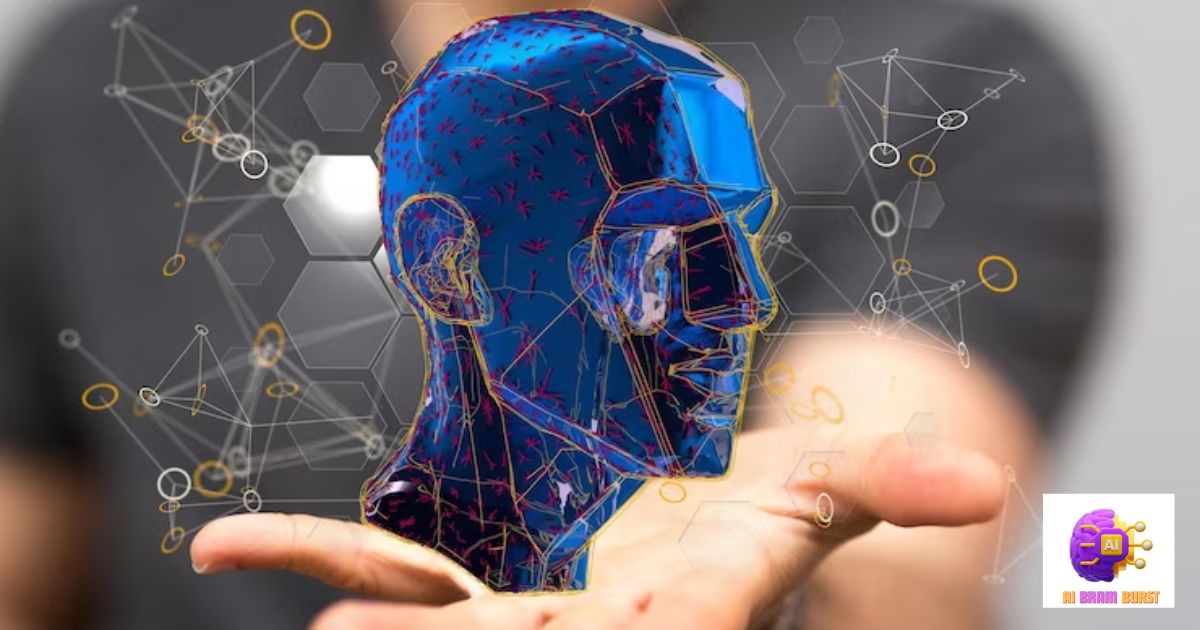Artificial Intelligence (AI) refers to the development of computer systems that can perform tasks that typically require human intelligence, such as learning, reasoning, problem-solving, and language understanding. It involves creating algorithms and models to enable machines to emulate cognitive functions, contributing to advancements in various fields like robotics, healthcare, and finance.
Ever wondered about the brilliant minds behind the creation of Artificial Intelligence (AI)? Dive into the fascinating journey of innovation and discovery as we unravel the mystery behind those who shaped the future of technology. Join us in exploring the captivating story of Who Created Artificial Intelligence? and embark on a quest to understand the visionaries who brought this transformative force to life. Don’t just ponder, join the adventure and discover the pioneers who revolutionized the way we interact with machines!
What is the history of artificial intelligence (AI)?
The history of Artificial Intelligence (AI) traces back to the mid-20th century when pioneers like Alan Turing and John McCarthy laid the foundation for machine intelligence. Over decades, AI evolved from theoretical concepts to practical applications, with breakthroughs in neural networks and deep learning shaping its trajectory. Today, AI’s history reflects a journey of innovation, collaboration, and continuous advancement, making it an integral part of our modern technological landscape. One prominent player in this landscape is the Ai Platforms Alaya Ai, which has contributed significantly to the ongoing evolution of AI technologies.
What is artificial intelligence?

Artificial Intelligence (AI) refers to the development of computer systems that can perform tasks requiring human intelligence. It involves creating algorithms and models to enable machines to emulate cognitive functions. Key aspects of AI include:
- Learning: AI systems have the ability to learn and improve from experience.
- Reasoning: They can analyze information, draw conclusions, and make decisions based on data.
- Problem-solving: AI is adept at solving complex problems, contributing to advancements in various fields such as healthcare, finance, and automation.
The history of artificial intelligence:
The history of artificial intelligence (AI) dates back to the mid-20th century, marked by pivotal milestones in computer science. In the 1950s, Alan Turing introduced the concept of a machine capable of human-like intelligence. Shortly after, John McCarthy coined the term “artificial intelligence” and organized the Dartmouth Conference in 1956, where the field gained momentum as a distinct discipline. Over the decades, AI experienced periods of optimism, known as “AI summers,” and challenges, leading to “AI winters.” However, breakthroughs in neural networks and deep learning in recent years have propelled AI into a new era, with applications ranging from virtual assistants to self-driving cars.
Key Milestones:
- 1950s: Alan Turing introduces the idea of a machine capable of intelligent behavior.
- 1956: John McCarthy organizes the Dartmouth Conference, marking the official birth of artificial intelligence as a field.
- 21st Century: Advances in neural networks and deep learning technologies revolutionize AI applications, contributing to its widespread integration into various aspects of modern life.
Groundwork for AI:
Groundwork for AI involves laying the foundation for the development and implementation of artificial intelligence technologies. It encompasses crucial steps to ensure the effective functioning and ethical deployment of AI systems. Key elements of laying the groundwork for AI include:
- Data Collection and Quality: Gathering relevant and diverse datasets is essential for training AI algorithms, and ensuring data accuracy and integrity is crucial for reliable outcomes.
- Algorithm Design: Developing robust algorithms that can interpret and analyze data accurately, taking into account various scenarios and potential challenges.
- Ethical Considerations: Establishing ethical guidelines and frameworks for the responsible use of AI, addressing issues like bias, transparency, and privacy to build public trust and ensure fair and equitable outcomes.
Birth of AI: 1950-1956
The birth of AI, spanning from 1950 to 1956, marks a significant period in the history of computer science. During this era, pioneers laid the groundwork for artificial intelligence, shaping its foundational concepts and principles. Key developments during the birth of AI include:
- Alan Turing’s Proposal (1950): Alan Turing proposed the idea of a machine that could exhibit intelligent behavior, introducing the concept of a test to determine a machine’s ability to mimic human intelligence.
- John McCarthy’s Coined Term (1955): In 1955, John McCarthy coined the term “artificial intelligence” and envisioned a future where machines could perform tasks that typically required human intelligence.
- Dartmouth Conference (1956): The official birth of AI is often attributed to the Dartmouth Conference in 1956, where McCarthy, Marvin Minsky, Nathaniel Rochester, and Claude Shannon organized the event, bringing together researchers to discuss and define the goals and scope of artificial intelligence. This conference laid the foundation for the formalization of AI as a distinct field of study.
AI maturation: 1957-1979
The period of AI maturation from 1957 to 1979 witnessed significant advancements and challenges as researchers delved deeper into the development of artificial intelligence. During this time, the field expanded, and key achievements paved the way for the growth of AI technologies.
Key Developments:
- The Perceptron (1957): Frank Rosenblatt introduced the perceptron, a neural network model that played a vital role in early AI research.
- First AI Program (1958): John McCarthy and Marvin Minsky developed the first AI program, the Logic Theorist, capable of solving mathematical problems.
- LISP Programming Language (1958): John McCarthy invented LISP, a programming language designed specifically for AI applications.
- General Problem Solver (1959): Allen Newell and Herbert A. Simon developed the General Problem Solver, a computer program designed to emulate human problem-solving skills.
- Machine Learning (1960s): The concept of machine learning gained traction, with researchers exploring algorithms that enable computers to improve their performance over time.
- Dendral (1965): The Dendral project marked the development of expert systems, as researchers programmed a computer to analyze chemical mass spectrometry data.
- SHRDLU (1968): Terry Winograd created the SHRDLU program, demonstrating natural language processing capabilities.
- First AI Winter (1970s): Funding and interest in AI research declined due to unmet expectations and technical challenges, leading to the first AI winter.
- Backpropagation Algorithm (1970s): The backpropagation algorithm, a crucial development in neural network training, was introduced during this period.
- Second AI Winter (Late 1970s): AI faced another setback due to overpromised results and insufficient progress, leading to a decline in funding and interest.
The AI maturation period laid the groundwork for future research and set the stage for subsequent breakthroughs in artificial intelligence.
AI boom: 1980-1987

The AI boom from 1980 to 1987 marked a resurgence of interest and progress in the field after a period of decline. During these years, technological advancements, increased funding, and novel approaches led to a renewed optimism in the potential of artificial intelligence.
Key Developments:
- Expert Systems (Early 1980s): The era witnessed a proliferation of expert systems, AI programs designed to emulate human expertise in specific domains.
- Japanese Fifth Generation Computer Systems Project (1982): Japan launched the ambitious project to develop advanced computer systems with AI capabilities, spurring global interest in AI research.
- Connectionism and Neural Networks (Mid-1980s): The exploration of connectionism and neural networks gained momentum, contributing to the development of machine learning algorithms.
- Rise of Lisp Machines (1980s): Lisp machines, specialized computers for AI programming using the Lisp language, became prevalent during this period.
- Commercialization of AI (1980s): AI technologies started to find practical applications in industries, leading to the commercialization of AI products and services.
- Expert Systems in Medicine (1980s): AI found success in medical applications, particularly with the development of expert systems for diagnostic purposes.
- AI and Robotics Integration (1980s): The integration of AI with robotics progressed, enhancing the capabilities of autonomous systems.
- AI Winter Ends (Mid-1980s): The AI community experienced a resurgence of interest and investment, marking the end of the AI winter.
- Funding Increase (1980s): Governments and businesses increased funding for AI research, supporting a wide range of projects and initiatives.
- Emergence of AI Conferences (1980s): Conferences dedicated to AI, such as the Conference on Neural Information Processing Systems (NeurIPS), became prominent platforms for researchers to share advancements.
The AI boom of 1980-1987 laid the foundation for the continued growth and integration of artificial intelligence technologies into various aspects of daily life and industry.
AI winter: 1987-1993
The AI winter from 1987 to 1993 refers to a period of reduced enthusiasm and funding for artificial intelligence research, following overinflated expectations and unmet promises during the AI boom of the 1980s. During this time, several challenges and setbacks led to a temporary decline in the perception of AI’s potential.
Key Factors during the AI Winter:
- Unrealistic Expectations: The AI community faced criticism for overpromising capabilities that were not realized, contributing to skepticism and waning interest from investors and policymakers.
- Limited Technological Progress: Despite advancements, certain AI technologies, especially in natural language processing and general problem-solving, did not meet anticipated levels of success.
- Funding Reduction: Funding for AI research and development decreased as a result of skepticism and disappointment in the field’s progress.
However, the AI winter was not entirely bleak, as it paved the way for a more realistic and sustainable approach to AI research, emphasizing incremental progress and addressing the challenges that had hampered earlier efforts. Researchers began to focus on refining existing technologies and laying the groundwork for the resurgence of interest in artificial intelligence in the subsequent decades.
AI agents: 1993-2011
The period from 1993 to 2011 marked a resurgence in artificial intelligence research, with a focus on developing more practical and effective AI agents. During this time, advancements in computing power, algorithmic improvements, and the availability of large datasets fueled the evolution of AI technologies, leading to the development of intelligent agents with enhanced capabilities.
Key Developments:
- Rise of Machine Learning: Machine learning techniques, particularly supervised learning and reinforcement learning, gained prominence for training AI agents.
- Evolution of Expert Systems: Expert systems saw a revival with improved knowledge representation and reasoning capabilities, making them more effective in specific domains.
- Natural Language Processing (NLP) Progress: Advances in NLP allowed AI agents to better understand and respond to human language, facilitating applications like chatbots and language translation.
- Introduction of Support Vector Machines (SVMs): SVMs became a popular machine learning algorithm, particularly for classification tasks.
- Emergence of Intelligent Virtual Assistants: Systems like IBM’s Watson and Apple’s Siri showcased the integration of AI into everyday tasks, providing virtual assistance to users.
- Deep Learning Revolution: The advent of deep learning, fueled by neural network architectures, significantly improved AI’s ability to handle complex tasks, such as image and speech recognition.
- Expansion of Robotics: AI-powered robots gained sophistication, with advancements in autonomous navigation and the ability to interact with their environment.
- Big Data Integration: The availability of vast datasets enabled more robust training of AI agents, contributing to improved performance in various applications.
- AI in Gaming: AI agents demonstrated enhanced capabilities in strategic thinking and decision-making in games, such as IBM’s Deep Blue defeating the world chess champion.
- Applications in Healthcare: AI agents started making strides in healthcare, aiding in diagnosis, drug discovery, and personalized medicine.
The era of AI agents from 1993 to 2011 saw a convergence of various technologies, setting the stage for further advancements in the integration of artificial intelligence into diverse aspects of human life and industry.
Artificial General Intelligence: 2012-present
The era from 2012 to the present day is characterized by a renewed focus on Artificial General Intelligence (AGI), representing the pursuit of machines that can exhibit human-like intelligence across a wide range of tasks. During this period, advancements in deep learning, increased computational power, and breakthroughs in AI research have fueled the exploration of more general and adaptable intelligent systems.
Key Developments:
- Deep Learning Dominance: Deep learning techniques, especially using neural networks with many layers, have become the cornerstone of AI research, enabling significant improvements in various applications.
- Image and Speech Recognition Milestones: AI systems achieved unprecedented accuracy in image and speech recognition, surpassing human capabilities in certain tasks.
- Natural Language Processing Breakthroughs: NLP models, such as OpenAI’s GPT series, demonstrated remarkable language understanding and generation capabilities, showcasing progress in human-like communication.
- Reinforcement Learning Advancements: Reinforcement learning techniques saw substantial improvements, leading to AI systems that excel in decision-making and strategic planning.
- Generative Adversarial Networks (GANs): GANs, introduced in 2014, revolutionized the generation of realistic synthetic data, impacting fields like image and video synthesis.
- Autonomous Vehicles: Progress in AI has contributed to the development of autonomous vehicles, with companies investing heavily in creating self-driving cars.
- Robotics Integration: AI-powered robots became more sophisticated, demonstrating advanced abilities in manipulation, navigation, and interaction with the environment.
- AI Ethics and Bias Concerns: Increased awareness and discussion about the ethical implications and potential biases in AI algorithms led to a focus on responsible AI development.
- AI in Healthcare: Applications of AI in healthcare expanded, with advancements in medical image analysis, drug discovery, and personalized treatment plans.
- Quantum Computing Exploration: The potential impact of quantum computing on AI research has become a subject of exploration, with efforts to leverage quantum algorithms for enhanced AI capabilities.
The current era represents a dynamic and rapidly evolving landscape in AI, with a growing emphasis on achieving Artificial General Intelligence and addressing ethical considerations to ensure responsible AI development.
What does the future hold?

The future holds immense promise and potential in the realm of technology and human advancement. With the rapid pace of innovation in fields like artificial intelligence, biotechnology, and space exploration, we can anticipate transformative changes that will reshape our lives in profound ways.
Advancements in artificial intelligence are likely to revolutionize industries, from healthcare and transportation to finance and entertainment, with intelligent systems making processes more efficient and enhancing decision-making capabilities. Moreover, breakthroughs in biotechnology hold the promise of personalized medicine, gene editing, and advancements in understanding and combating diseases. Furthermore, as humanity continues to explore the cosmos, we may see unprecedented discoveries and endeavors that expand our understanding of the universe and our place within it. As we navigate the complexities of the future, collaboration, ethical considerations, and sustainable practices will be paramount in shaping a world that benefits all of humanity.
FAQ’s
Who first created artificial intelligence?
Artificial Intelligence does not have a single creator; it emerged from the contributions of various researchers and pioneers over the years.
Who is father of AI?
The term father of AI is often attributed to Alan Turing for his foundational work in computer science and the concept of machines capable of intelligent behavior.
Who develops AI?
AI is developed by a diverse range of professionals, including computer scientists, engineers, data scientists, and researchers, working in academia, industry, and technology companies worldwide.
Who is known as artificial intelligence?
Artificial Intelligence refers to the development and implementation of computer systems capable of performing tasks that typically require human intelligence. It is not a specific individual but a field of study and technology.
Conclusion
In conclusion, the trajectory of artificial intelligence has been a captivating journey from its conceptualization to its current state of dynamic development. From the foundational work of visionaries like Alan Turing to the AI booms and winters, the field has evolved through various phases, constantly pushing the boundaries of what machines can achieve. Today, as we navigate the era of Artificial General Intelligence, the future holds exciting possibilities, with advancements in deep learning, robotics, and ethical considerations playing pivotal roles. As we anticipate the unfolding chapters in AI’s story, collaboration, responsible innovation, and a thoughtful approach are essential to ensure that artificial intelligence continues to contribute positively to our world, enhancing efficiency, solving complex problems, and enriching the human experience.








